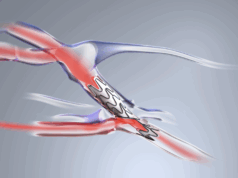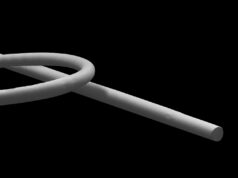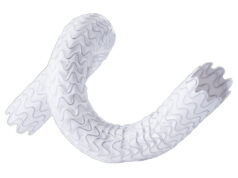
The Society for Clinical Vascular Surgery (SCVS) 50th Annual Symposium (25–29 March, Miami, USA) hosted a series of abstract presentations. Among them was one by Bianca Mulaney and colleagues including Elizabeth George (both Stanford University, Stanford, USA) on the cost effectiveness of endovascular arteriovenous fistula (endoAVF) creation when compared with surgical AVF (sAVF) creation.
Mulaney began her presentation by telling the SCVS audience that around US$2.8 billion is estimated to be spent on vascular access and its complications each year in the USA, which she said amounts to “a significant cost burden” as well as “a significant portion of the vascular surgeon’s caseload”. Though endoAVF has demonstrated lower rates of complications such as steal syndrome in some studies, “the clinical and financial impact of endoAVF remains uncertain”, according to Mulaney. It is this uncertainty that the study she led aimed to resolve.
“The one way we can get at this question, in the absence of concrete data from a randomised controlled trial (RCT), is a cost effectiveness analysis aimed at forecasting the outcomes of the two approaches,” Mulaney said.
The parameters for her cost-effectiveness analysis came from a systematic review she conducted to obtain data on technical success of the procedures along with maturation, patency, and utility values, as well as data from the Medicare 2022 fee schedule for costs associated with the two procedures. She presented a decision tree linked to a probabilistic cohort state-transition model comparing endoAVF and sAVF outcomes over five years. Further outlining the study authors’ methods, the abstract states that they used “a five-year time horizon, an annual discount rate of 3% for costs and utilities—measured in quality-adjusted life years (QALYs)—and the common willingness-to-pay (WTP) threshold of US$50,000.”
Setting out the study’s findings, Mulaney stated clearly that endoAVF was found not to be cost effective when compared with sAVF. “Although endoAVF increases QALYs by the equivalent of about one-and-a-half months of extra life for the average patient with ESRD,” she added, “it comes at a significantly greater cost.” Comparing endoAVF (per capita US$30,129 costs, 2.19 QALYs; 65% patent at five years) with sAVF (per capita US$12,987 costs, 2.11 QALYs; 66% patent at five years) generated an incremental cost-effectiveness ratio (ICER) of US$227,504 per QALY gained.
However, Mulaney specified that a series of one-way sensitivity analyses revealed that, when several variables reached certain thresholds, endoAVF did become cost effective. When the endoAVF maturation rate is greater than 90%, for instance, it became cost effective compared with sAVF. Other examples include when the initial cost of sAVF creation exceeds endoAVF by at least US$600, the additional QALYs gained from endoAVF exceeds 0.12 QALYs/year and when sAVF maturation rate is beneath 65%.
The abstract presented by Mulaney ascribes endoAVF’s inferior cost effectiveness when modelling five-year outcomes to the “four times higher up-front cost for endoAVF creation as well as a relatively low initial maturation rate for endoAVF”. Mulaney expanded on this, putting forward the suggestion that an RCT is “definitely warranted” to further examine when endoAVF may be more cost effective. Responding to audience questions, Mulaney highlighted maturation rates as something which the study found to be having a particular impact on cost effectiveness. She called on device companies to improve device capabilities to increase maturation rates. Looking forward, she also said she would welcome future studies examining the differences between specific endoAVF devices.











